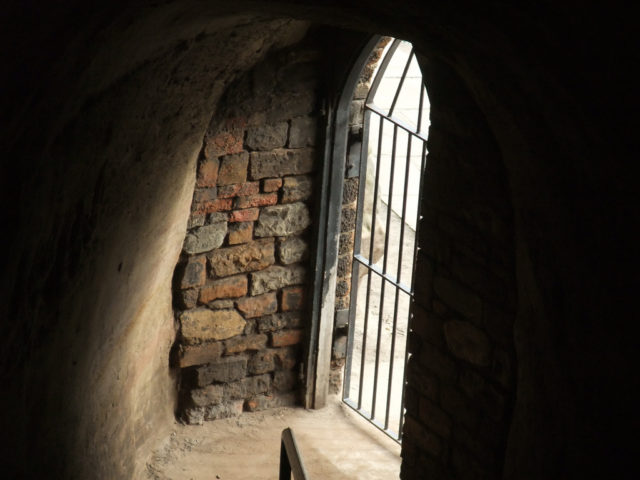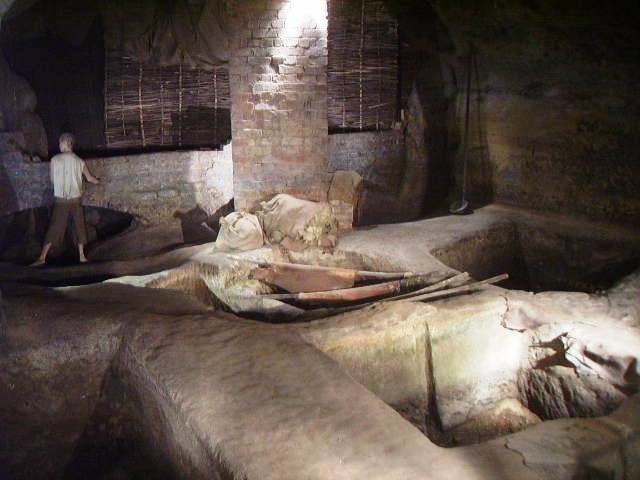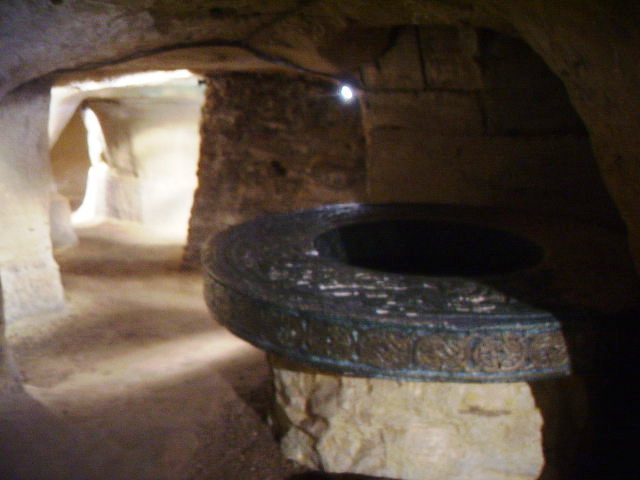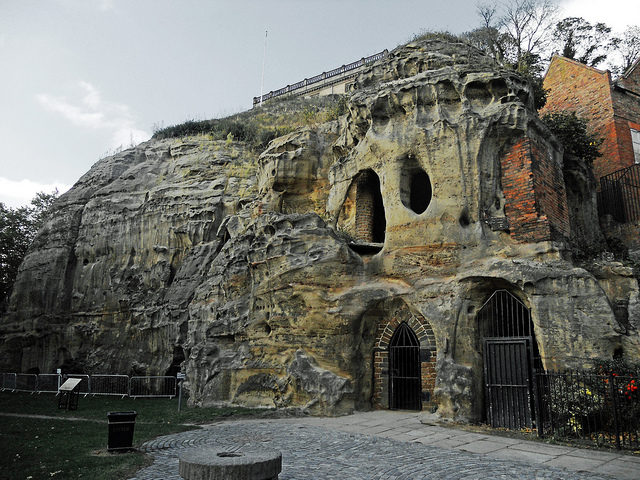A celebration of history, heritage, and culture is probably what best describes the city of Nottingham in England. Situated on the north bank of the River Trent, in Nottinghamshire, this beautiful city was once the heart of Britain’s lace industry and was considered one of the greatest trade centers in the country.
However, its association with Robin Hood, the most famous English folk hero, who supposedly lived in Sherwood Forest near the city, is what makes Nottingham a unique tourist destination, and as such, the city is visited by millions of tourists every year.
But Nottingham has so much more to offer, and if we go a little deeper into history, and I mean literally deeper, beneath the houses, bars, offices, and streets of Nottingham, we will be amazed to find out that there is a fascinating hidden world of numerous man-made caves waiting to be discovered.

What makes this place unique is the fact that there is no other area throughout the whole of Britain that has more man-made caves than the one located in the city of Nottingham. Known as the “City of Caves,” the area which is still being explored by archaeologists consists of a complex of around 500 caves carved out of sandstone, believed to have existed for as long as the city or even earlier than that.

Asser, a Welsh monk and historian who lived in the era of Alfred the Great (849 – 889), and is well known for being his biographer, is the first to mention the “City of Caves” in his detailed biography of King Alfred, The Life of King Alfred, written back in 893, referring to the area as “Tiggua Cobaucc,” which means “place of caves.”

From dungeons to cellars, the eerie underground caves have been used for various purposes, including brewhouses for beer. It’s no wonder that many caves were used as brewhouses since the temperature inside the caves created ideal conditions for the purpose. As a matter of fact, the caves under the Nottingham Castle were used for brewing and storing beer.

Another interesting historical fact closely connected with the caves under the Nottingham Castle is that King Edward III entered the castle using the caves and ended up taking prisoner both his mother and her lover, Roger de Mortimer, who was the ruler of England at the time.
Many poor citizens of Nottingham found their homes deep down in the darkness of the caves, but the authorities ordered that the caves be abandoned with the 1845 Enclosure Act. But despite the municipality’s orders many people continued living in caves outside the city. Whole families lived in small rooms under horrific living conditions which in many cases led to cholera and tuberculosis.
Most recently, the caves were used as air raid shelters during World War II. They played a crucial role in saving the lives of many citizens of Nottingham during the Nottingham Blitz, which occurred on May 8, 1941, and up to this day, it remains Nottingham’s biggest raid. The Germans dropped over 1,000 bombs on the city, killing 200 people and injuring several hundred more. But many people escaped to the centuries-old caves, which were the best possible air raid shelters the city could afford during the darkest hours of the war.

The citizens of Nottingham and archaeologists keep discovering more and more man-made caves every year and over the past decade, more than 100 caves have been discovered. It is believed that there are over 200 caves under Nottingham yet to be discovered.
Considering how old the caves are and how significant the “City of Caves” is in both historical and cultural terms, it’s no surprise that it has Ancient Monument Protection. Many of the caves have been destroyed over time, but there is a great number of them that are nowadays a tourist attraction and are open to the public.
